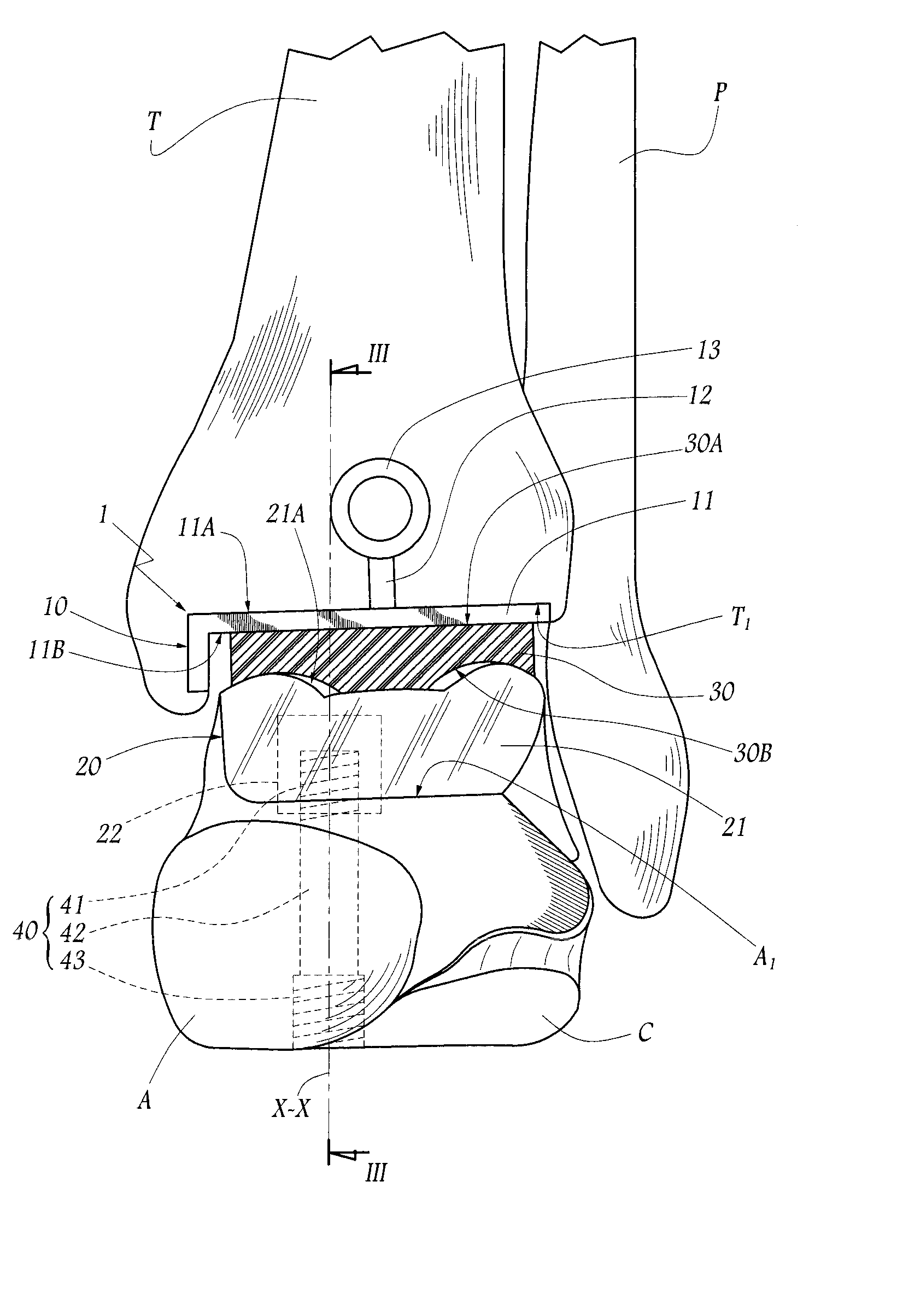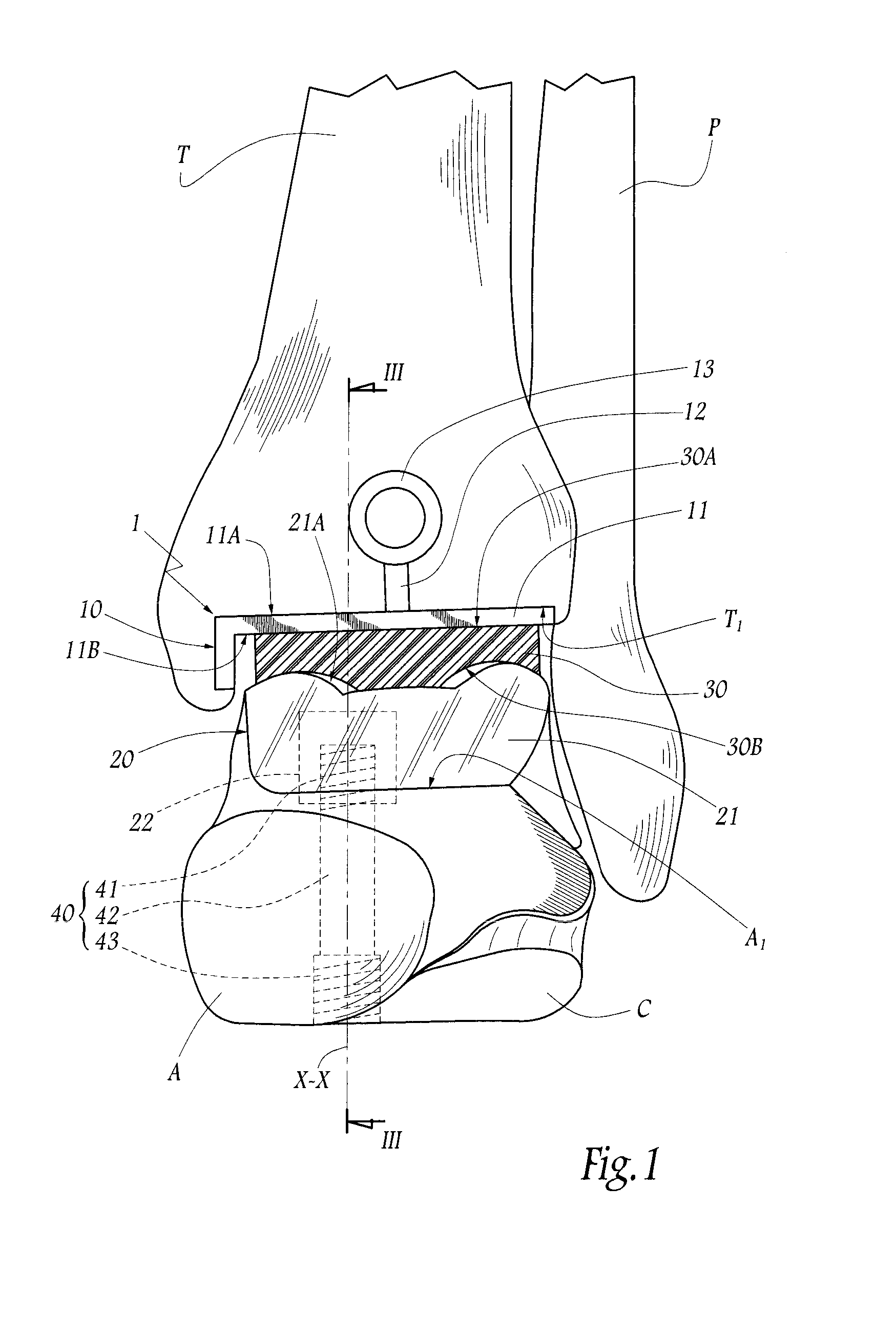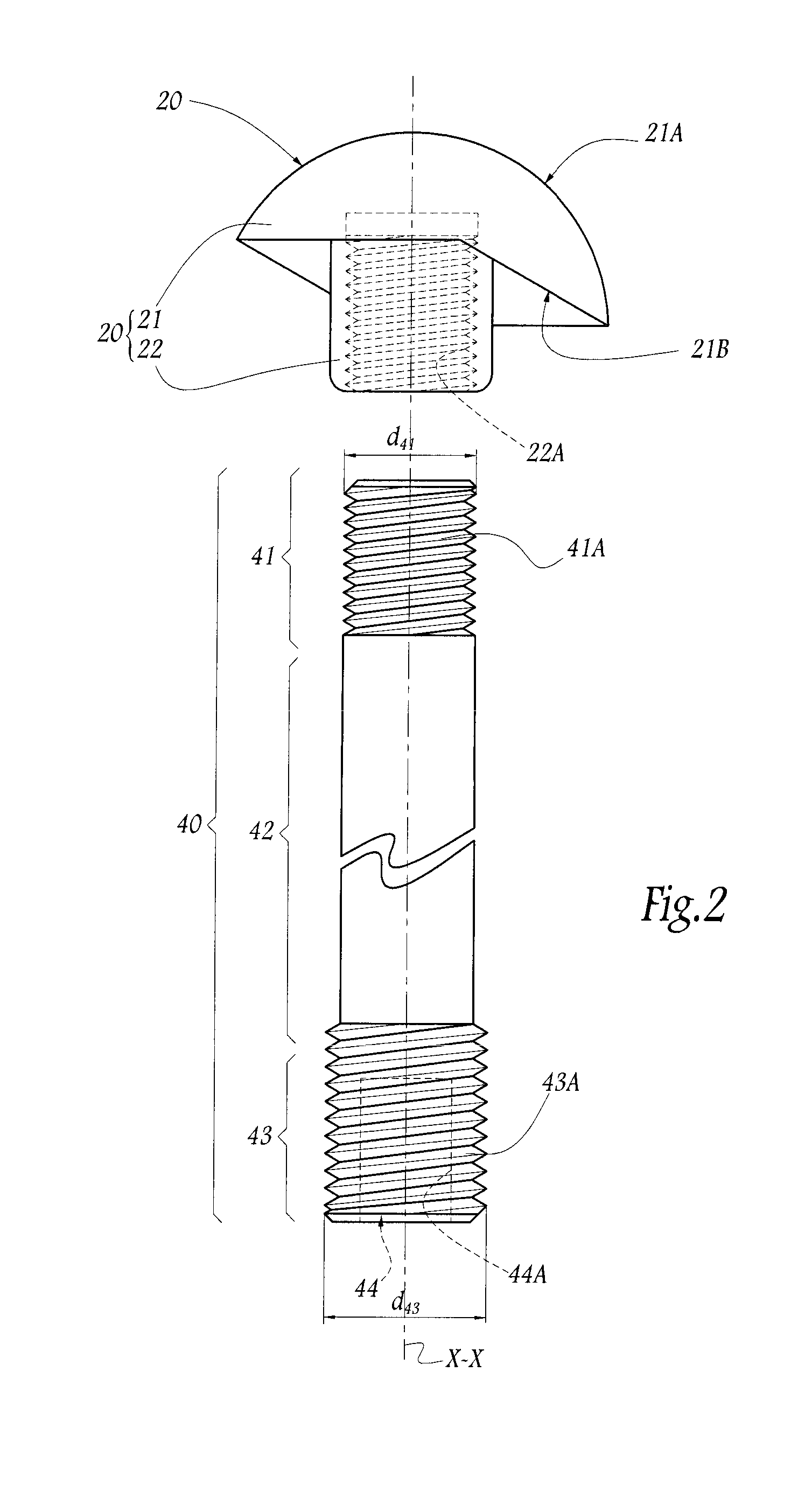Ankle prosthesis for the arthrodesis of the calcaneum
a technology of calcaneum and prosthesis, applied in the field of prosthesis, can solve the problems of delay in implantation of articular prosthesis, ineffective blockage of articulation by assembly, and patient's pain, and achieve the effect of relieving pain
- Summary
- Abstract
- Description
- Claims
- Application Information
AI Technical Summary
Benefits of technology
Problems solved by technology
Method used
Image
Examples
Embodiment Construction
[0041]FIG. 1 shows schematically the lower ends of a tibia T and of a peroneal bone P or fibula of a human being, and also the corresponding astragalus A and calcaneus C, thereby illustrating the constituent bones of the left ankle of a patient. FIG. 1 also shows a prosthetic ankle assembly 1 comprising four separate components implanted in the ankle of the patient, namely a tibial component 10, an astragalar component 20, a prosthetic bearing 30, interposed between the tibial and astragalar components, and an astragalocalcanean rod 40. In FIG. 1, only the bearing 30 is shown in frontal section, whereas the broken lines are used to symbolize the contours of the components concealed by bone substance.
[0042]For convenience, the description that follows relates to the bones of the ankle in their anatomical position, that is to say the terms “posterior” or “rear”, “anterior” or “front”, “upper”, “lower”, etc., are to be understood in relation to the ankle of the patient when standing up...
PUM
 Login to View More
Login to View More Abstract
Description
Claims
Application Information
 Login to View More
Login to View More - R&D
- Intellectual Property
- Life Sciences
- Materials
- Tech Scout
- Unparalleled Data Quality
- Higher Quality Content
- 60% Fewer Hallucinations
Browse by: Latest US Patents, China's latest patents, Technical Efficacy Thesaurus, Application Domain, Technology Topic, Popular Technical Reports.
© 2025 PatSnap. All rights reserved.Legal|Privacy policy|Modern Slavery Act Transparency Statement|Sitemap|About US| Contact US: help@patsnap.com



